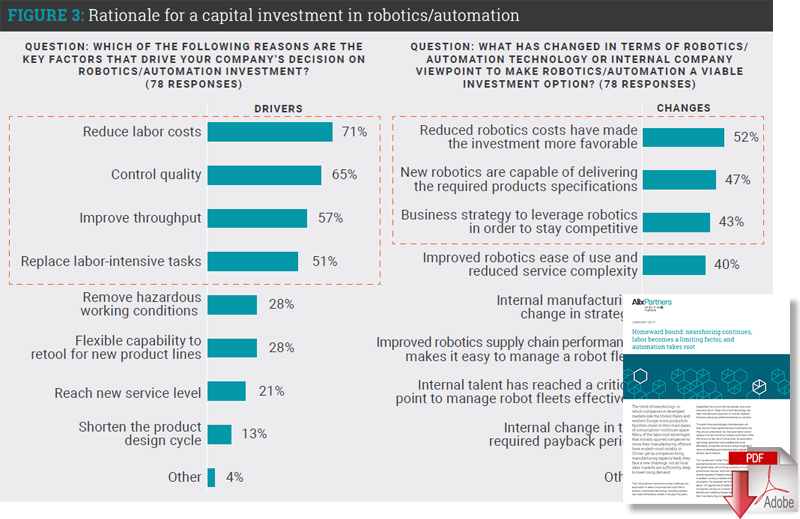In a new “manufacturing outlook” report focusing on the automotive and industrial sectors, AlixPartners observes that many of the labor-cost advantages associated with near-shoring may be lost if companies fail to spend more on automation in the near future.
The consultancy notes that automation capabilities have improved dramatically, and implementation expenses have come down.
As a consequence this kind of technology can help manufacturers augment - or entirely replace - functions previously performed entirely by humans.
“To exploit those technologies, manufacturers will likely have to make capital-intensive investments,” says Foster Finley, a managing director at AlixPartners in New York.
“But they should understand, too, that automation cannot replace a human workforce.”
Instead, adds Finley, automation shifts the focus to a new set of critical skills.
“As automation technology becomes more available and more affordable, companies will have to adopt longer-term views on developing and retaining talent aligned with the tactical use of robotics,” he says.
The survey, which polled manufacturing and distribution companies in the U.S. and Western Europe, finds that 69% of respondents believe near shoring is a possible opportunity to meet demand from consumers, up from 40% in last year’s survey.
“This increase in near shoring has led to labor challenges, however,” says Finley.
“Many respondents are having a hard time filling roles like product engineers and frontline supervisors.”
Along with these labor issues, two-thirds of respondents said they plan to invest significantly in automation technologies.
“So what we may expect is more spend in human resources with higher salaries and other incentives, at the same time companies will place greater reliance on technology.”
Researchers note that automotive and electronics manufacturers have been the biggest adopters of automation technology thus far.
But companies in other sectors - such as pharmaceuticals, instrumentation and measurement devices, medical equipment, and pulp and paper - will likely begin to shift more of their manufacturing capacity to robots in the coming years.
Conclusion
A decade ago, the labor-cost advantages of offshoring were clear.
Today, determining the strategic location of manufacturing assets is a complex, high-stakes process.
Moreover, rapid technological advances in robotics and automation are introducing new variables that compound the challenge, but also introduce some new opportunities.
Given these factors, executives and investors need a rigorous process to assess, design, and implement strategic manufacturing sourcing programs.
The decisions aren’t easy, but management teams that get them right can give their companies a clear competitive edge.
About the Author
Follow Robotics 24/7 on Linkedin
About the Author
Follow Robotics 24/7 on Linkedin
Article topics
Email Sign Up



















